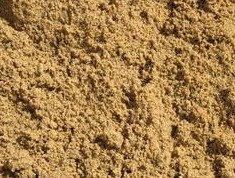
HOW FINE AGGREGATES AFFECTS CONCRETE MIX DESIGN?
Fine aggregates affecting concrete mix design strength
Gradation of fine aggregates

The gradation of sand is given by sieve analysis. The sieve analysis is done by passing sand through a set of standard sieves and finding out cumulative passing percentage through each sieve. The IS 383 – 1970 -Table 4, (clause 4) classifies fine aggregates in 4 zones starting from zone I representing coarse sand, to zone IV representing the finest sand. The limits of cumulative percentage passing for each sieve for above zones are given in table 4 of IS 383 The fineness of sand found by sieve analysis governs the proportion of sand in concrete. The overall fineness of sand is given by factor called fineness modulus. Fineness Modulus is given by division of the summation of cumulative retained fractions for standard sieves up to 150-micron sieve size by 100. The fineness modulus of sand varies from 2.0 to 4.0; higher the FM coarser is the sand.
Fineness modulus of sand
- Fine – 2.0 to 2.8
- Medium – 2.8 to 3.2
- Coarse – 3.2 and above
Specific gravity of fine aggregates
This is the ratio of solid density of sand particles to the density of water. Higher the specific gravity heavier is the sand particles and higher is the density of concrete. Conversely a lower specific gravity of sand will result in lower density of concrete. Specific gravity of sand is found with help of pycnometer bottles. The specific gravity of fine aggregates found in Pune region varies from 2.6 to 2.8.
Silt Content by weight
This is found by wet-sieving of sand and material passing 75 micron sieve is classified as silt. This silt affects the workability of concrete, results in higher water/cement ratio and lower strength. The upper limit for 75-micron sieve in case of sand is 3% by weight. This limit has however been extended to 15% in case of crushed sand in IS 383 – 1970 Table 1.
